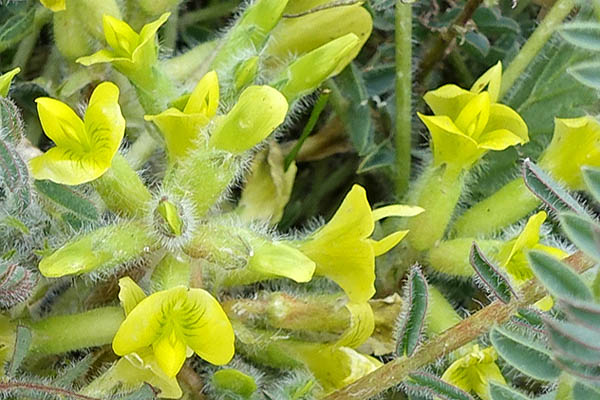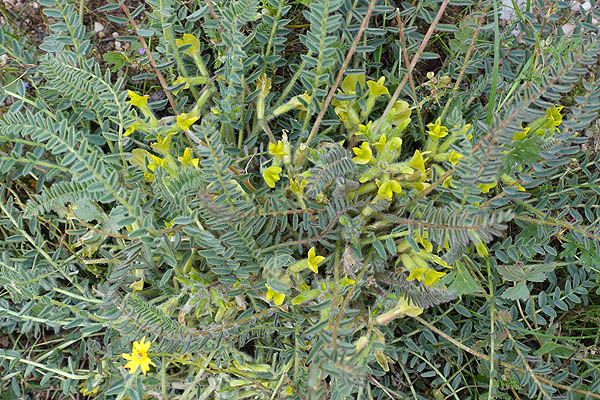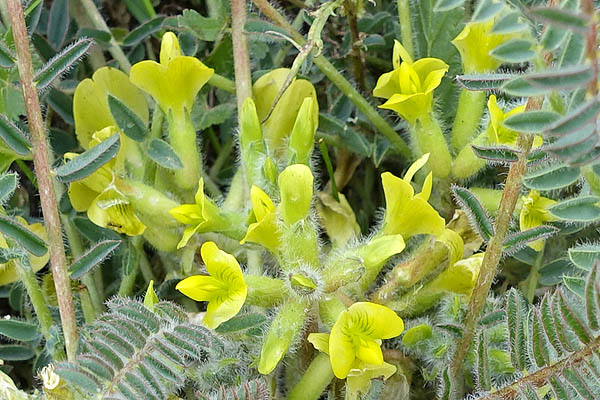Astragalus beershabensis, Beer Sheva milk-vetch,
Hebrew: קדד באר שבע ,Arabic: القتاد الماعزي
| Scientific name: | Astragalus caprinus L. | |
| Synonym name: | Astragalus platyraphis Bge.,Astragalus alexandrinus Boiss., Astragalus beershabensis Eig & Sam. | |
| Common name: | Beer Sheva milk-vetch | |
| Hebrew name: | קדד באר שבע | |
| Arabic name: | القتاد الماعزي | |
| Family: | Fabaceae or Papilionaceae, Legume/Pea Family, הפרפרניים |

|
| Life form: | Hemicryptophyte | |
| Stems: | No central stem, 11-16 cm high | |
| Leaves: | Rosette, alternate, compound, pinnate, smooth margin,leaflets ciliate, stipule | |
| Inflorescence: | Inflorescences sessile | |
| Flowers: | Petals Yellow | |
| Fruits / pods: | Legumes ovate, tumid, villose | |
| Flowering Period: | February, March, April | |
| Habitat: | Shrub-steppes | |
| Distribution: | Mediterranean Woodlands and Shrublands, Shrub-steppes, Semi-steppe shrublands, Deserts | |
| Chorotype: | Saharo-Arabian | |
| Summer shedding: | Ephemeral |

Derivation of the botanical name: Astragalus, ἀστραγαλος, literally signifies a huckle bone (talus), a small bone of the ankle; astragalus, which the Greeks, as well as the Romans, used for dice and other purposes and an early name applied to some plants in this family, with vertebra-like knotted roots. caprinus of a goat; in reference to the leaves of A. caprinus, the cilia; of which have been compared to a goat's heard. The Hebrew word: קדד, kedad, related to Akkadian (the earliest attested Semitic language; qadādu (= to lean, bend, incline), from Arabic qudad.

|